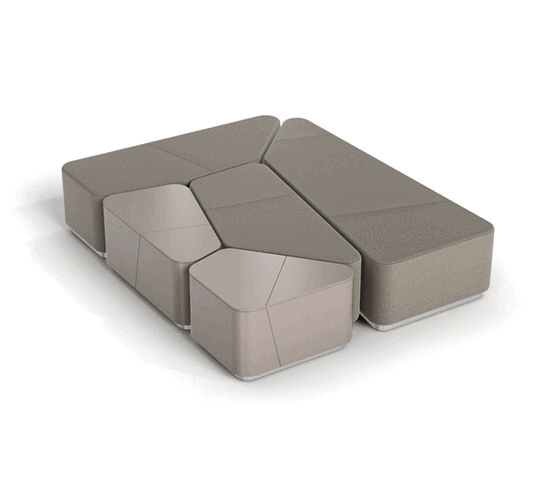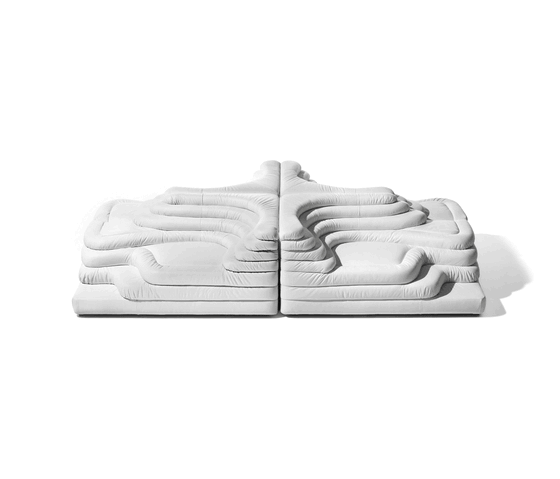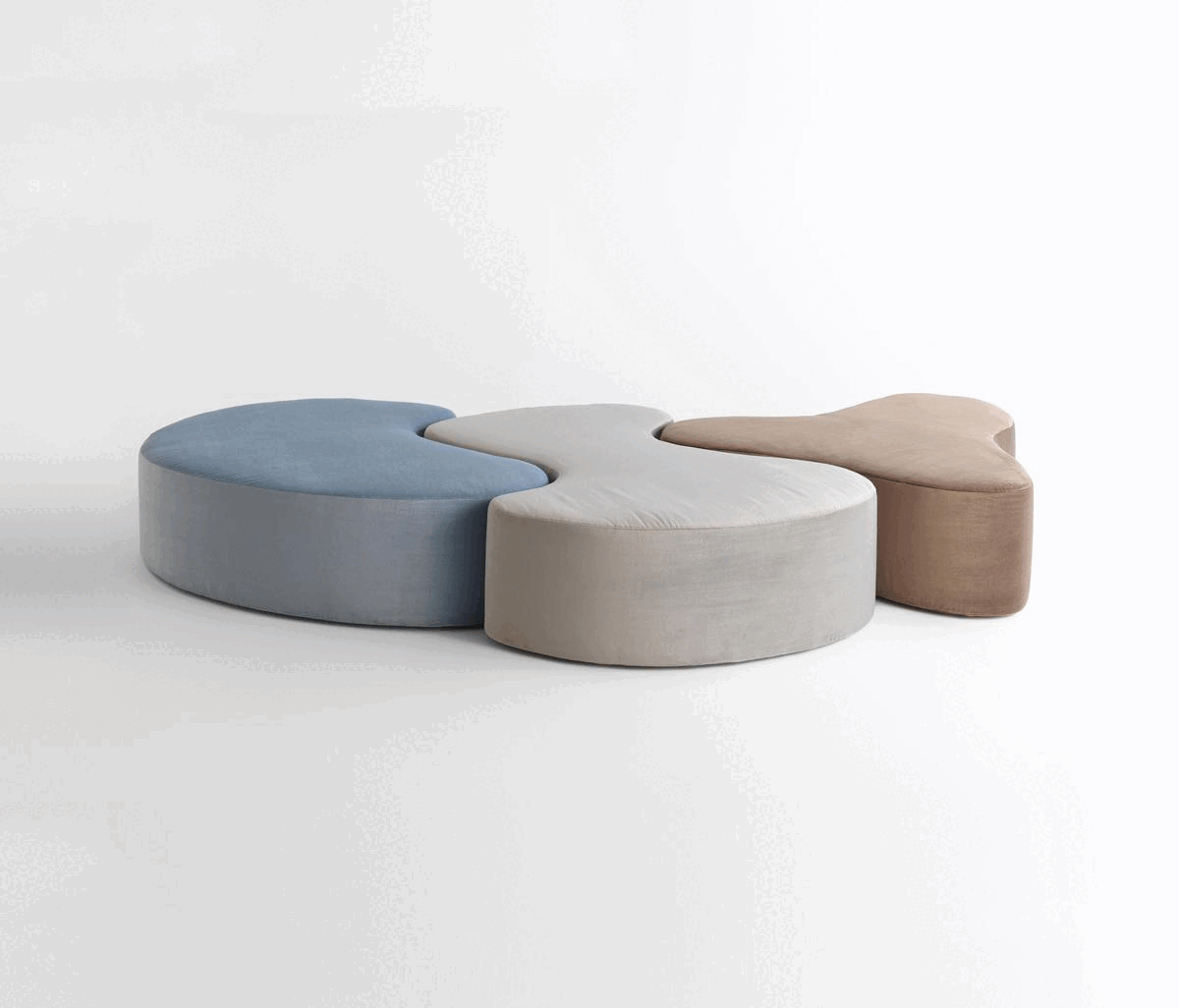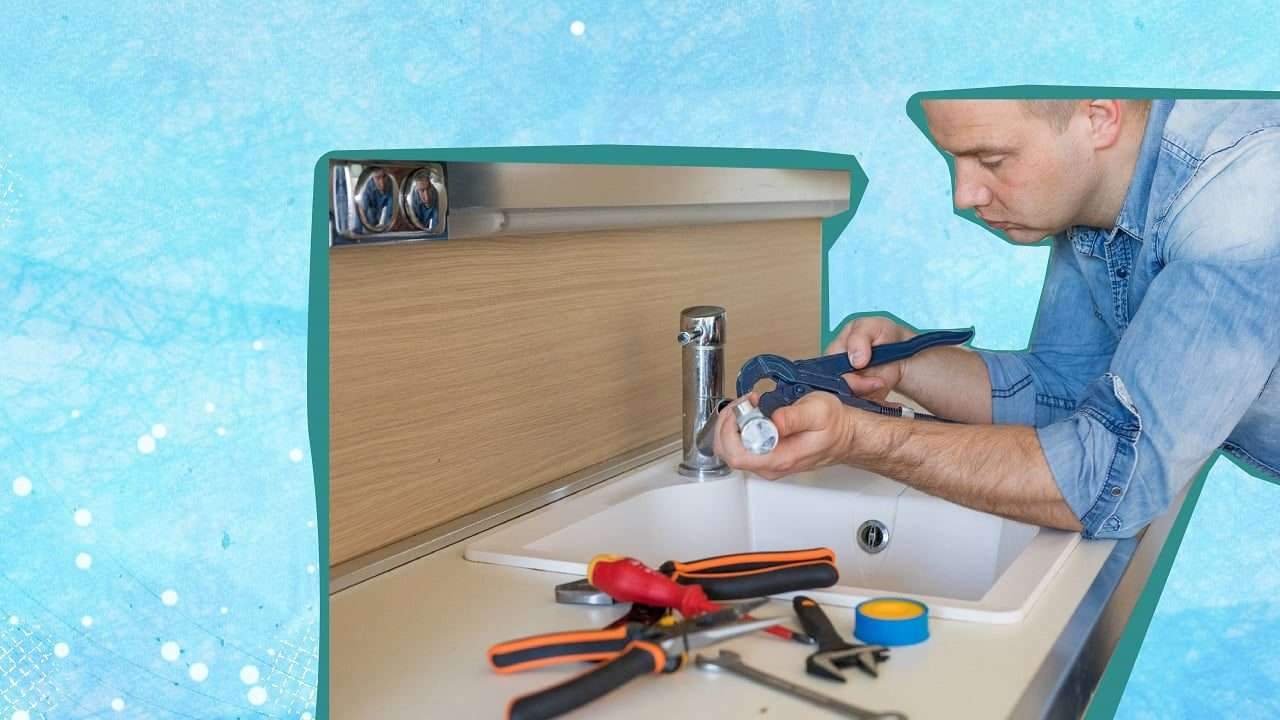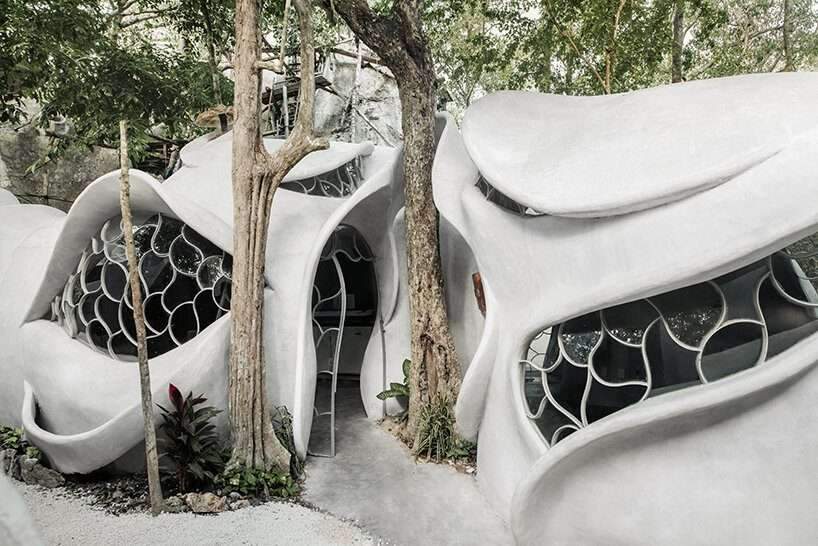Modular Sofas for Flexible Spaces: Playing with Geometry

Next to a wall or in the corner of a room, most sofas seem relegated to lean against the only available wall in a space, preferably with a TV in front. As they are usually very large pieces of furniture, they can be complicated pieces to integrate into a room. In consequence, a sofa might end up “stiffening” a space, restricting movement and compromising flexibility – an increasingly important aspect for interiors – in a room. This is why the sofa can be considered an anchor piece in interior design; an element whose placement will probably not change throughout time, and that will certainly have an impact on the other elements within a space.
Modular sofas, however, give flexibility and versatility to an otherwise rigid piece. Made of separate parts, they can adopt several shapes and sizes, creating different ambiances and completely changing the layout and distribution of an environment. In this article, we showcase some modular sofa options – and how they can add dynamism to interior spaces – with product examples from the Architonic catalog.
Right angles
90-degree angles are the most common in architecture due to their rationality and ease of construction. Naturally, modular sofas that combine right angles are also the most traditional, easily adapting to most internal spaces. The modules can be grouped or separated; with sections with or without back support; rectangular or square. Arranging them in a simple grid can allow for virtually infinite layouts, giving people the freedom to get creative.
Square modules

Rectangular modules

Modules with support

Acute and Obtuse Angles
When sofas are positioned as prominent pieces in a space – and if there is enough room –, one can start to play with acute and obtuse angles. Usually located in the center of a space, these types of sofas can create new routes to circulate in and form unusual designs and micro-spaces, providing both quiet and open areas.
Complex forms with a single module

Interchangeable units for linear solutions (or not)

Alone or in complex combinations

Various angles
Playing with different angles can make a space more dynamic: by combining pentagrams, for example, one can create a variety of arrangements; or, the modules can be laid out like a large puzzle, providing seating for many people while being easy to put away in a neat and compact square.
Perfect-fitting
Simple geometries united

Pentagrams

Circles
Circular furniture can make interiors fun and playful. Although some modular sofas don’t allow for a perfect fit, an alternative can be to arrange them circles. This, in turn, can be a dynamic way to design interiors for more informal contexts. There are options that, combining different heights, diameters, wavy patterns and semicircular pieces, allow for unique circular or meandering shapes.
Different heights

Regular radius

Wavy patterns

Different diameters

Organic shapes
Amorphous volumes are not exactly geometric, but can add a whimsical and unusual feel to a room. At the same time, they can smoothly and organically organize the flow of people. In addition to the shapes found on a two-dimensional plan, one can also play with other dimensions, such as different heights, concavities and convexities, as well as scales and waves – all of which provide movement to a space.
Concave and convex

Individual Abstract Pieces

Sloping landscapes
Complementary volumes
Waves

See other examples in Architonic’s modular section.

